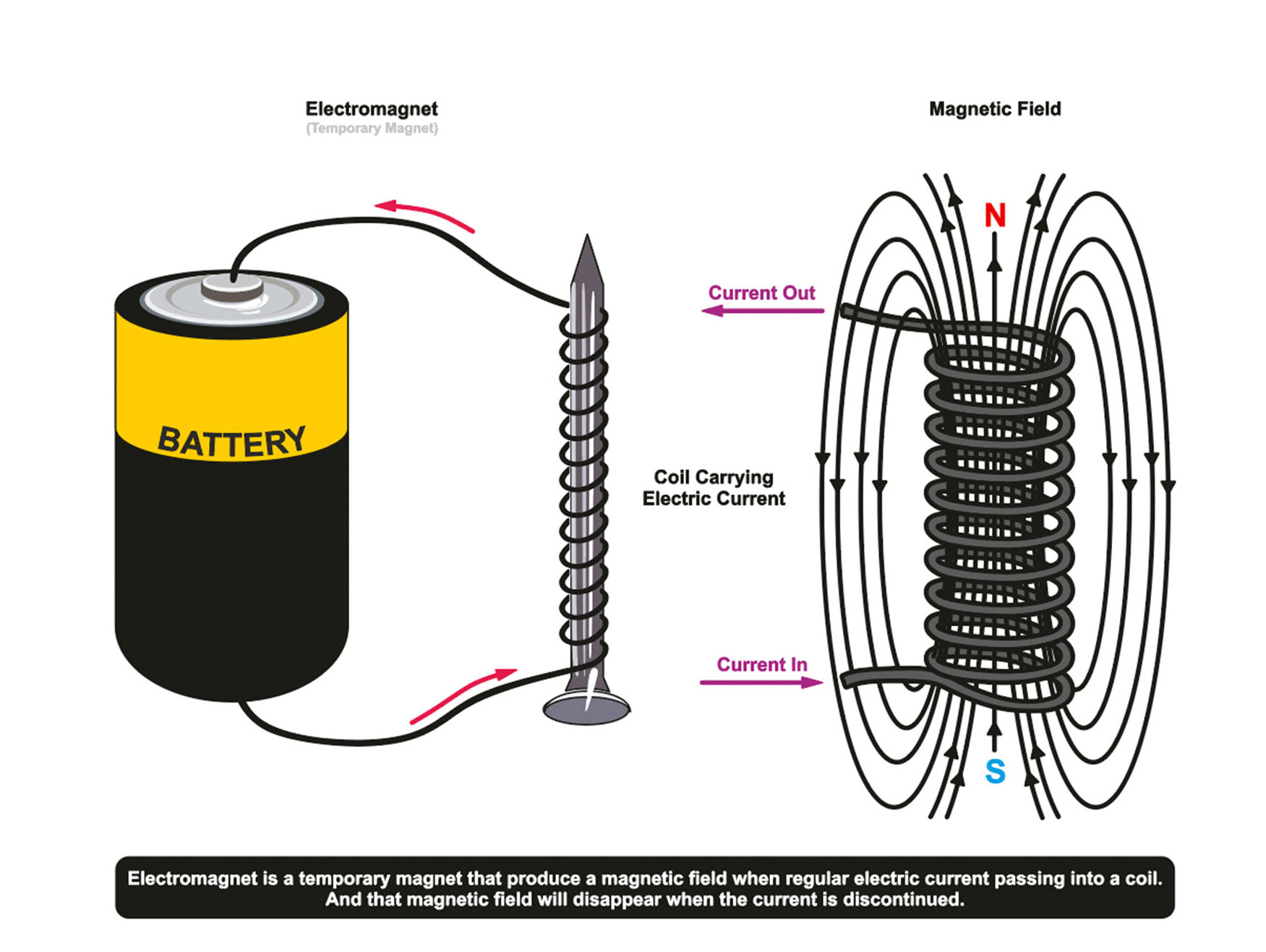Magnets and Electromagnets Study Guide
INTRODUCTION:
The amazing designs that the iron creates when it comes into contact with a magnet are a lot of fun to watch. These designs are formed due to the magnetic field of the magnet. And not just for playing; magnets have a very important role in our lives. Whether it be your audio speaker or a hospital scanning machine, magnets are widely used around us. Let’s learn more about magnets and magnetic fields in more detail.
MAGNETS:
- A magnet is an item or substance that generates a magnetic field. This magnetic field is subtle, yet it is accountable for a magnet’s most remarkable property: a force that attracts or repels similar ferromagnetic elements such as iron, nickel, cobalt, and other magnets.
- A permanent magnet is a structure constructed of magnetized material that generates its permanent magnetic field. For example, a refrigerator magnet keeps notes on the refrigerator door.
- The term ferromagnetic refers to materials that can be magnetized and strongly attracted to a magnet.
MAGNETIC FIELD:
- The magnetic field is the zone wherein the force of magnetism works around a magnetic substance or a circulating electric charge.
- The magnetic impact on moving electric charges, electric currents, and magnetic materials is described by a magnetic field, which is a vector field. A moving charge experiences a force perpendicular to both its speed and the magnetic field in a magnetic field.
ELECTROMAGNET:
- An electromagnet is a magnet whose magnetic field is generated by a current flow.
- Wire wrapped into a coil is used to make electromagnets.
- A current flowing through the wire produces a magnetic field focused in the aperture, which serves as the coil’s core.
- When the electricity is switched off, the magnetic field vanishes.
- The wire loops are frequently twisted around a magnetic core formed of a ferromagnetic or ferrimagnetic substance such as iron that focuses the magnetic flux and produces a stronger magnet.
CONCLUSION:
- Electromagnets are magnets whose magnetic field is generated by a current flow.
- A magnet is an item or substance that generates a magnetic field.
- The magnetic field is the zone wherein the force of magnetism works around a magnetic substance or a circulating electric charge.
FAQs:
1. What is the difference between magnets and electromagnets?
A permanent magnet is a structural item that becomes magnetized and generates its magnetic field. Whenever an electric current is permitted to run through a coil of wire of an electromagnet, it functions as a magnet. Electromagnets need an electric current to function as a magnet.
2. What is the difference between magnets and magnetism?
A magnet is a mineral or a metal bar that can attract certain metals to itself. Magnetism, or the force of magnets, is a fundamental natural force similar to electricity and gravity. Magnetism has a large range of applications. This indicates that a magnet doesn’t have to contact an item to draw it.
3. What are electromagnets and magnets used for?
Electronic equipment, such as turbines, generators, electromechanical solenoids, switches, loudspeakers, hard drives, MRI machines, scientific equipment, and magnetic separation devices, employs electromagnets.
We hope you enjoyed studying this lesson and learned something cool about Magnets and Electromagnets! Join our Discord community to get any questions you may have answered and to engage with other students just like you! Don’t forget to download our App to experience our fun, VR classrooms – we promise, it makes studying much more fun! 😎
SOURCES:
- 19.1. Electromagnet. https://flexbooks.ck12.org/cbook/ck-12-physics-flexbook-2.0/section/19.1/primary/lesson/electromagnets-phys/. Accessed 10 Feb 2022.
- 21.1. Magnet. https://flexbooks.ck12.org/cbook/ck-12-middle-school-physical-science-flexbook-2.0/section/21.1/primary/lesson/magnets-ms-ps/. Accessed 10 Feb 2022.




